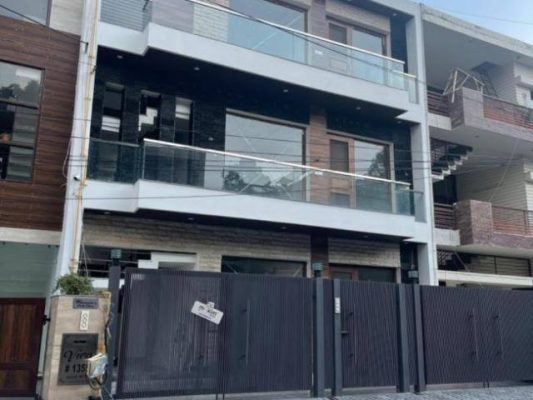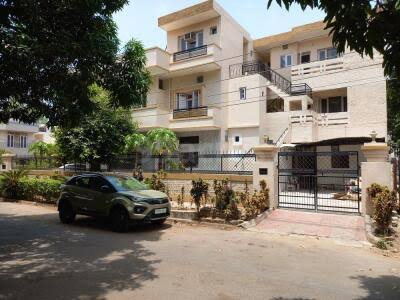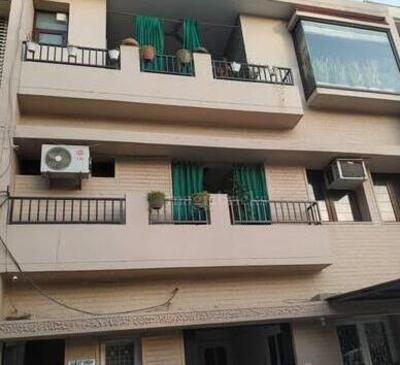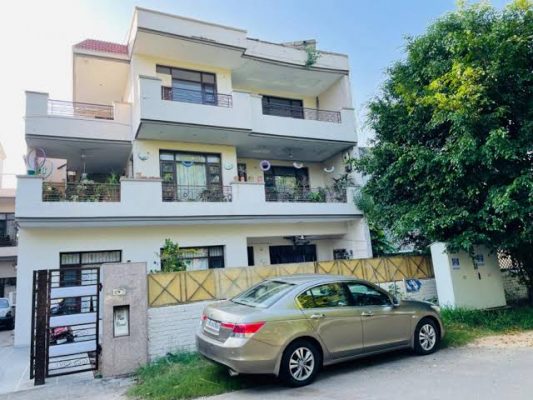Le Corbusier, the original architect of Chandigarh, in his edict of Chandigarh which he had laid down famously said, “The seed of Chandigarh is well sown. It is for the citizens to see that the tree flourishes.” And truly fulfilling his hope are some of the old residents of Chandigarh who went till the Supreme Court to maintain the sanctity of the city.
In a much welcome move for city residents, the Supreme Court has prohibited the conversion of residential houses into floor-wise apartments in Sectors 1 to 30 in Chandigarh, citing heritage status of Le Corbusier zone. Let us deconstruct the issue and find out what lies at the heart of the matter:

Supreme Court observations
-
- A bench of Justices B R Gavai and B V Nagarathna slammed the Chandigarh administration for “blindly sanctioning” building plans in which one dwelling unit is being converted into three apartments.
- Such a haphazard growth may adversely affect the heritage status of phase-I of Chandigarh (Sectors 1-30)which is sought to be inscribed as a UNESCO’s heritage city.
- In our view, this would amount to permitting something indirectly which is not permitted directly.
- The adverse effect on traffic, which would result as a result of converting one dwelling unit into three units, has not been addressed.
- contrary to the Chandigarh Master Plan (CMP) -2031 itself “The fragmentation/apartmentalisation of single dwelling units in phaseI of Chandigarh, in our view, will injure the ‘Lungs’ of the city as conceptualised by Le Corbusier”

The Verdict
- “In that view of the matter, we hold that in view of Rule 14 of the 1960 Rules (Chandigarh (Sale of Sites and Building) Rules 1960), Rule 16 of the 2007 Rules and the repeal of the 2001 Rules (Chandigarh Apartment Rules, 2001), fragmentation/division/ bifurcation/apartmentalisation of a residential unit in phase-I of Chandigarh is prohibited”
The bench said till a final decision is taken by the Centre, the Chandigarh administration shall not sanction any plan of a building which ex-facie appears to be a modus operandi to convert a single dwelling unit into three different apartments occupied by three strangers. The heritage conservation committee will reconsider its clauses on apartmentalization and present it to the Centre.
-
-
- Till the Centre takes a final decision, no Memorandum of Understanding (MoU) or agreement or settlement amongst co-owners of a residential unit shall be registered nor shall it be enforceable in law for the purpose of bifurcation or division of a single residential unit into floorwise apartments.
 Representational Photo
Representational Photo -
What the SC ruling means
Chandigarh Administration will freeze FAR (floor area ratio) and shall not increase it any further. This means that no change will be made in the open and covered area ratio, no construction will be allowed in covered area. Neither the administration nor the central government can increase it.
The number of floors in phase-I shall be restricted to three with a uniform maximum height as recommended by the Heritage Conservation Committee.
The Chandigarh administration shall not formulate rules or bylaws without prior consultation of the Heritage Conservation Committee and prior approval of the Centre.
“The SC ruling has come as a solution to many problems, it will prevent additional pressure on infrastructure , drainage, sewerage, population density. Nobody will try to tinker with the architectural design of City Beautiful,” says Ajay Jagga, Advocate, Punjab & Haryana High Court.
What is Chandigarh Heritage Conservation Committee?
It is an expert committee formed by the ministry of Home affairs, government of India, to advise the Chanidgarh administration on matters related to identification, protection, conservation and maintainance of Chandigarh’s heritage. With the UT Advisor as its head, its members include UT home secretary, finance secretary, representative of ministry of Home Affairs and ministry of culture, New delhi, MC commissioner, UT estate officer, UT chief architect, UT chief engineer, representative of Archaeological survey of India, among its 18 members. The committee dwells on the preservation of the architectural or immovable heritage of Chandigarh. The committee meets 2-3 times in a year. There is another committee called the HIPC, Heritage Items Protection Cell, which is responsible for the preservation of movable property.
What is Chandigarh phase I?
Chandigarh was made a Union Territory (UT) and became the capital of Punjab and Haryana in 1966. The city was developed in two phases ― Phase I consisting of Sectors 1 to 30, and Phase II consisting of Sectors 31 to 47. Le Corbusier had designed and planned the city from Sectors 1-30 which was to be developed as a low density area. In the masterplan, this area which covers around 9,000 acres of land was meant for 1.50 lakh people with one acre meant for 16 people only.
Phase I was designed for low-rise plotted development while Phase II sectors were expected to have a much higher density..
The redensification of sectors 1-30 has been mulled by the Chandigah Administration. The Chandigarh Heritage Conservation Committee will consider the issue of redensification in these sectors. After that the UT administration will consider amending the Chandigarh Master Plan-2031 and the 2017 apartment rules in accordance with the recommendations of the committee. Any amendments will have to be placed before the central government for approval.

What it means for builders/ realtors/ property dealers
Around 1,000-odd property owners who had either entered into agreements with co-owners or registered with the UT estate office to sell the property stand affected as their agreements have been declared null and void. 900 property owners have registered with the UT estate office to sell the properties but now they cannot do so. Around 100 property owners had entered into agreements, memoranda of understanding and settlements, which have been declared null and void after the Apex Court ruling.
Property rates in sectors 1-30 will reduce drastically and also make it difficult for buyers to get bank loans for purchasing property in these sectors. Property dealers are apprehensive that no buyers will come in these sectors, people would prefer Mohali and Panchkula. “There will be no floor-wise registry of property, in family-owned property, share wise distribution is allowed but if one has to sell the property, the entire property has to be sold to one person, this will go beyond the reach of potential buyers,” says Jaswinder, property dealer.
“The property rates in Mohali will increase by about 10-15 pc. Builders will not venture out to buy property in Chandigarh, city residents will also be fearful of selling property to realtors,” he says.
According to petitioners who were represented by senior lawyer PS Patwalia in the case, there are around 60,000 houses in Sectors 1 to 30 and 10% of these have already been converted into apartments and sold further, but the UT administration had found only 900 property owners i.e. those who had registered with the estate office.
Time line of the legal row
2001: Apartment rules were introduced in Chandigarh whereby single residential units could be sub-divided into apartments..
2006: City residents and Chandigarh’s chief architect MN Sharma met UPA chairperson regarding the issue
2007: Apartment rules taken back
2016: Sector 10 Residents’ Welfare Association (RWA) filed a petition in the high court, got limited relief. Indirectly people still kept selling and purchasing property. Realtors purchased properties, demolished old houses, constructed apartments and sold them according to shares– ground floor is considered 50 pc share, first floor 30 pc share and second floor 20 pc share. So, the RWA knocked the doors of the Supreme Court.
2022: Punjab and Haryana High Court ruled that residential plots in Chandigarh can have multiple shareholders, even outside the family. It was this order that has been challenged by the RWA in the Supreme Court as it had come to light that between 2016 and 2019, as many as 891 sale deeds were registered by the Estate Office, wherein a part of the property was sold outside the family.
The Real hero
The man who took up the cudgels to fight the Estate office-Builder nexus is Col Kulwinder Singh (retired) 76, president of the Residents’ Welfare Association (RWA), Sector 10, Chandigarh, who has been living in Chandigarh since 1954. He has said that the motive behind the seven-years’ long legal battle was to save the character of City Beautiful as it was envisaged by Le Corbusier. In his fight to save the heritage of the City Beautiful was ML Sarin, secretary general, Sarin Memorial Legal Aid foundation, has been living in Chandigarh since January 1955 and was also a party in the case.










